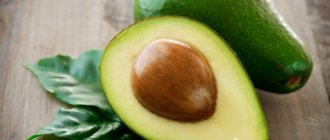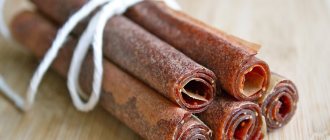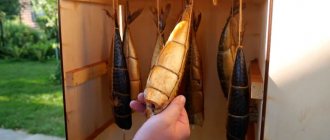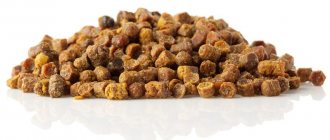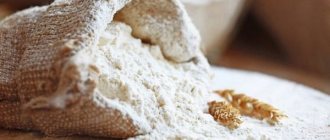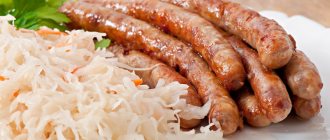Dried fruits have been used as culinary additives and folk remedies since ancient times. And this is no coincidence. So, raisins are storehouse of potassium, magnesium and iron. In addition, due to its calorie content, it can be used as a snack. However, improper storage of both purchased and home-made dried grapes can lead to the loss of all useful substances, unsightly appearance, and rotting. That is why it is so important to know the basic principles of preserving the most popular dried fruit.
How to organize proper storage of raisins
You can get raisins at home, or you can buy the finished product in a store or market. However, before purchasing this dried fruit, it is important to pay attention to its appearance - choose fleshy and wrinkled berries. Raisins with stalks , since they help preserve the beneficial properties of the product for a longer period.
Natural raisins are brown rather than amber in color. Preserving the golden color of light grapes is only possible when preservatives, such as sulfur dioxide, are used during the drying process, which significantly reduces the nutritional value of dried fruit.
Drying and grape varieties
Each grape variety differs from the other in taste, color and some characteristics. But, regardless of the variety, dried fruits should not be too wet or soft. There is a certain list of signs that indicate that the product is not spoiled, and during the drying of the grapes all the rules and nuances of the process were followed:
- fruits are hard;
- dried grapes are wrinkled;
- the taste is sweet.
When purchasing, you need to pay attention to the color of the dried fruits, since the color of the product is directly dependent on the variety. For example, light seedless raisins turn golden brown when dried.
And the shigani grape variety acquires an almost black color with a slight bluish tint. When you plan to dry the product yourself, you need to rinse the bunch thoroughly and inspect all the grapes for damage. But, the shelf life of raisins, regardless of the type of grape that was dried, does not exceed six months.
Containers recommended for storing raisins
The duration of preservation of the beneficial properties of dried grapes largely depends on the storage capacity. The maximum period will be ensured by hermetically intact dishes . For example, to store dried fruits, you can use a glass or ceramic vessel, a closed wooden barrel, a plastic container, a natural fabric bag or a paper bag.
However, it is not necessary to completely deprive raisins of air access. Instead of lids, it is recommended to cover the container with paper or not close the lid all the way. But it is better to tie bags and paper bags tightly .
Storage at room temperature
The most convenient and affordable way to preserve the integrity and quality of raisins is to store them in a cool, dark and dry place, in other words, in the pantry . If there is no such room in the house, you can store dried fruit in a cabinet in the kitchen. The main thing in this case is to place the raw materials as far as possible from the stove and electric kettle. It is not recommended that the storage temperature be higher than 17°C .
Please note: storing dried grapes at room temperature requires weekly inspection and sorting . So, it is necessary to get rid of spoiled berries, fruit moths and other pests that are not averse to eating dried fruits.
This method is suitable for storing small quantities of dried fruits, since maintaining their quality with this method is possible only within 2 months .
Technical specifications (TU) for packaged dried fruits
These technical specifications apply to packaged dried fruits (with or without seeds), intended for direct consumption, sold through retail chains and public catering establishments.
The products are available in the following range:
— Dried cranberries;
— Raisins “Jumbo”, “Golden”, “Malyar” and others;
— Dried apricots (Apricots) with pits, without pits, whole and cut;
— Dates with pits, without pits, whole and cut;
— Dried dates on a branch;
— Compote mixture;
— Dried prunes with pits, without pits, whole and cut;
— Dried figs;
— Dried coconut;
— Dried ginger;
— Dried rose hips;
— Dried bananas;
— Dried guava;
— Dried papaya with apricot (apple, strawberry, mango, raspberry, cherry, cantaloupe) flavor;
— Dried nectarine;
— Dried passion fruit;
— Dried avocado;
— Dried cherry plum;
— Dried jackfruit;
— Dried carambola (starfruit);
The product name can be supplemented with a fancy name.
Product OKP codes are given in Appendix A.
An example of an entry when ordering and (or) other documents:
"Dried fruits. Dried apricots (dried apricots) with pits" - TU 10.39.25–004–15597601–2017"
The requirements of these technical specifications are mandatory and suitable for identification and certification of this type of product.
These technical specifications have been developed in accordance with GOST R 51740.
The list of regulatory documents referenced in these technical specifications is given in Appendix B.
1 QUALITY AND SAFETY REQUIREMENTS
1.1 Products must comply with the requirements of these technical conditions, Technical Regulations of the Customs Union TR CU No. 021/2011 “On the safety of food products” and be produced according to recipes, technological instructions, approved in the prescribed manner, in compliance with current sanitary standards and rules.
1.2 In terms of organoleptic indicators, products must meet the requirements given in Table 1.
Table 1
| Indicator name | Characteristic |
| Appearance | Dried fruits must have a shape, size, configuration and appearance characteristic of a given type of product or different shapes: ring, cube, leaf, stick, tablet, mixture, etc.); |
| Color | Typical for this name of dried fruit. For dried grapes (raisins), the mass fraction of berries of a different color is allowed to be no more than 7% |
| Taste and smell | Typical for this name of dried fruit. A slight odor of sulfur dioxide is allowed for processed dried fruits. Foreign taste and smell are not allowed |
1.3 In terms of physical and chemical indicators, products must comply with the standards specified in Table 2.
table 2
| Indicator name | Norm for pome fruits | Norm for stone fruits | |||
| Peeled or unpeeled without seed chamber | Unpeeled with seed chamber | Whole fruits with pits | Fruit halves, whole pitted apricots | ||
| Mass fraction of moisture, %, no more | 24 | 25 | |||
| Mass fraction of sulfur dioxide in processed fruits, %, no more | 0,1 | 0,1 | |||
| Mass fraction of defective fruits, including fruits with mechanical damage, %, no more; of them: | 7 | 16,5 | 3 | 4 | |
| - fruits damaged by agricultural pests, hail damage and diseases, spoiled, of which: | 2 | 7 | 2 | 3 | |
| - spoiled fruits | Not allowed | Not allowed | Not allowed | Not allowed | |
| - fruits with mechanical damage | 1 | 5 | — | — | |
| - fruits damaged by grain pests | 1 | 2 | Not allowed | Not allowed | |
| - underdeveloped fruits | — | — | Not allowed | 0,5 | |
| - fruits with partially exposed pits | — | — | Not allowed | — | |
| Fruits with stalk (for compote mixture), %, no more | — | 3 | — | — | |
| Fruits are swollen | Not allowed | 2,5 | Not allowed | Not allowed | |
| Mass fraction of circles and slices for types and varieties of sliced fruits without a seed chamber, % not more than | With the remains of a seed nest | 10 | 10 | — | |
| With unpeeled skin | 5 | — | |||
| For dried grapes (raisins) | |||||
| Mass fraction of moisture, %, no more | 20 | ||||
| Mass fraction of sulfur dioxide in processed fruits, %, no more | 0,001 | ||||
| Mass fraction of fruits with mechanical damage, %, no more | 5 | ||||
| Mass fraction of berries with stalks, %, no more | 3 | ||||
| Mass fraction of freely separated impurities of plant origin, %, no more | 0,03 | ||||
| Mass fraction of skinny and underdeveloped fruits%, no more | 2 | ||||
| Mass fraction of mechanically damaged berries, %, no more | 5 | ||||
*The following are not allowed in dried fruits and berries: organoleptically perceptible mineral impurities; metal impurities and other foreign impurities; rotten, burnt fruits, waste; insect pests, their larvae and pupae.
1.4 In terms of microbiological indicators, dried fruits must meet the requirements of the Technical Regulations of the Customs Union TR CU No. 021/2011 “On the safety of food products” (Appendix 1, Appendix 2 (ind. 1.5) and SanPiN 2.3.2.1078, given in Table 3.
Table 3
| Product group | KMAFAnM, CFU/g, no more | Weight of product (g) in which are not allowed | Mold, CFU/g, no more | Yeast, CFU/g, no more | |
| Coliforms (coliforms) | Pathogenic, including salmonella | ||||
| Dried fruits | 5x104 | 0,1 | 25 | 5x102 | 5x102 |
1.5 The content of toxic elements and pesticides should not exceed the permissible levels established by the Technical Regulations of the Customs Union TR CU No. 021/2011 “On the safety of food products” (Appendix 3, index 6), SanPiN 2.3.2.1078, given in Table 4.
Table 4
| Name of substance (element) | |||
| Toxic elements in terms of the initial product, taking into account the content of dry substances in it and the final product | Lead | 0.4 (fresh) | |
| Arsenic | 0.2(fresh) | ||
| Cadmium | 0.03(fresh) | ||
| Mercury | 0.02(fresh) | ||
| Pesticides in terms of the initial product, taking into account the content of dry substances in it and the final product | Hexachlorocyclohexane (α, β, γ – isomers) | 0.05 (fresh) | |
| DDT and its metabolites | 0.1(fresh) | ||
1.6 Requirements for raw materials
1.6.1 All raw materials used must be accompanied by documentation certifying their safety and quality, and comply with the Technical Regulations of the Customs Union TR CU No. 021/2011 “On the safety of food products” and “Hygienic requirements for the safety and nutritional value of food products” SanPiN 2.3.2.1078. Raw materials must be controlled for GMO content.
1.6.2 The following raw materials and materials are used for the production of products:
— dried pome fruits according to GOST 32896;
— dried stone fruits according to GOST 32896;
— dried grapes (raisins) according to GOST 6882;
- dried: cranberries, dates, figs, strawberries, coconut, ginger, rose hips, bananas, guava, cantaloupe (Thai melon), papaya, nectarine, passion fruit, avocado, jackfruit, starfruit, allowed for food use in the prescribed manner ok
1.6.3 It is allowed to use imported raw materials with similar characteristics, approved for use for food purposes in the prescribed manner.
2 MARKING
2.1 Labeling of consumer and transport packaging is carried out in accordance with the requirements of the Technical Regulations of the Customs Union TR CU No. 022/2011 “Food products regarding their labeling”, GOST R 51074 by applying lithographic or offset printing, or embossing, or any other method that ensures clear information for the consumer.
2.2 Marking of consumer packaging is applied by gluing a label indicating:
- Product name;
— name and location of the manufacturer (legal address, including country, and, if it does not coincide with the legal address, production address) and the organization in the Russian Federation authorized by the manufacturer to accept claims from consumers in the territory of the Russian Federation (if any);
— manufacturer’s trademark (if available);
— net weight of the packaging unit (for products in consumer packaging);
- composition of the product;
— food additives, flavors, dyes, ingredients of non-traditional products;
— information about the presence of ingredients obtained using GMOs in the product (if their content exceeds the established limit);
— nutritional value (in accordance with Appendix A).
— date of manufacture;
- best before date;
- storage conditions;
— designation of these technical conditions;
— a single mark for the circulation of products on the market of member states of the Customs Union;
— information about confirmation of conformity.
2.3 Transport markings indicating the method of handling the cargo are applied in accordance with GOST 14192 - “Keep away from moisture”, “Keep away from sunlight”, “Fragile, be careful”.
2.4 Each unit of transport packaging must be marked with the following information:
— name and location of the manufacturer (legal address, including country, and, if it does not coincide with the legal address, the address of the enterprise);
— trademark (if available);
— product name;
— gross mass of a unit of transport container;
— net weight of one unit of consumer packaging;
— the number of packaging units in a unit of transport container;
— date of manufacture and date of packaging;
— storage conditions;
— expiration date;
— information on confirmation of conformity;
— designations of these technical conditions.
2.5 Additional information characterizing the manufacturer and the product may be placed on consumer and transport packaging.
2.6 Additionally, labeling information can be duplicated in a foreign language or languages of the peoples of Russia.
3 PACKAGING
3.1 The products are released packaged, they are packaged with a net weight from 20 g to 25000 g.
3.2 The following are used as consumer packaging when packaging products:
— polyethylene food film according to GOST 10354;
— films and bags made of polymer and combined materials in accordance with GOST 12302;
— bags made of combined heat-sealable polymer materials based on aluminum foil and varnished cellophane in accordance with GOST 33772;
— packs of cardboard, paper and combined materials in accordance with GOST 33781;
- plastic packaging, containers and polystyrene substrates and other types of packaging materials permitted in the prescribed manner for contact with this product.
3.3 It is permitted to use other packaging that is approved in the established manner for contact with this product and ensures the safety of the product during transportation and storage.
3.4 The limit of permissible negative deviations of the net mass of one packaging unit from the nominal quantity - according to GOST 8.579, (Appendix A, tables A.1-A.2) are given in table 5.
Table 5
| Nominal net quantity M | Limit of permissible negative deviations T | |
| % of M | G | |
| St.5 up to 50 g incl. | 9 | — |
| St. 50 to 100 g incl. | — | 4,5 |
| St. 100 to 200 g incl. | 4,5 | — |
| St. 200 to 300 g incl. | — | 9 |
| St. 300 to 500 g incl. | 3 | — |
| St. 500 to 1000 g incl. | — | 15 |
| St. 1000 to 25000 g incl. | 1,5 | — |
The positive deviation of the net weight of one packaging unit is not regulated.
3.5 Consumer packaging is placed in transport containers with a net weight of no more than 25 kg. Boxes made of corrugated cardboard are used in accordance with GOST 13511, GOST R 54463. It is allowed to use corrugated cardboard pallets sealed with heat-shrinkable polymer film, approved in the prescribed manner for contact with this product.
3.6 The flaps of corrugated cardboard boxes are covered with paper-based adhesive tape in accordance with GOST 18251 with a width of at least 70 mm, and polyethylene tape with an adhesive layer in accordance with GOST 20477.
3.7 All packaging materials in contact with food products must meet the requirements of the Technical Regulations of the Customs Union TR CU No. 005/2011 “On Packaging Safety”, GN 2.3.3.972 and be accompanied by documentation certifying their quality and safety.
4 ACCEPTANCE RULES
4.1 Dried fruits are taken in batches. A batch is understood as any quantity of a product of the same name, identically packaged, with the same packaging date, produced during one shift, and documented with one document on quality and safety. The document on quality and safety is drawn up at the discretion of the manufacturer in accordance with current legislation.
4.2 Organoleptic characteristics, net weight, quality of packaging and labeling are determined in each batch of the product. Physico-chemical indicators are checked periodically, in accordance with the procedure established by the product manufacturer, as well as in case of disagreements, according to organoleptic assessment of product quality and at the request of the controlling organization or consumer.
4.3 Control over the content of microbiological indicators, toxic elements, pesticides in the product is carried out in accordance with the procedure established by the product manufacturer, in accordance with the requirements of SP 1.1.1058 “Organization and conduct of production control over compliance with sanitary rules and implementation of sanitary-epidemiological (preventive) measures.”
4.4 If unsatisfactory test results are obtained, repeat tests are carried out from a double sample taken from the same batch. The results of repeated tests apply to the entire batch.
4.5 If an unsatisfactory result is obtained according to at least one of the quality and safety indicators, the batch of products is not subject to sale.
4.6 The manufacturer guarantees that the quality and safety of the product meets the requirements of these technical specifications, subject to storage conditions within the expiration date.
5 CONTROL METHODS
5.1 Sampling and preparation of samples - according to GOST 15113.0, GOST 1750.
5.2 Determination of organoleptic indicators: packaging quality, net weight and volumetric weight - according to GOST 15113.1.
5.3 Determination of physical and chemical parameters:
— mass fraction of moisture – according to GOST 15113.4.
— dry substances – according to GOST 28561;
- impurities and infestation with barn pests - according to GOST 15113.2.
5.4 Determination of the content of toxic elements - according to GOST 26927, GOST 26930, GOST 26932, GOST 26933, GOST 33824, GOST R 51776. Selection, preparation and mineralization of samples - according to GOST 26929.
5.5 Determination of pesticides - according to GOST 30349, GOST 30710; MU 1222; MU 2142; MU 4380.
5.6 Rules for microbiological research according to GOST 31904;
- preparation of samples for microbiological analysis - according to
GOST 26669;
— methods of cultivating microorganisms – according to GOST 26670.
5.7 Microbiological indicators determine:
— determination of the number of mesophilic aerobic and facultative anaerobic microorganisms - according to GOST 10444.15
- identification and determination of the number of coliform bacteria - according to GOST R 31747;
— detection of bacteria of the genus Salmonella — according to GOST 31659;
- determination of molds and yeasts - according to GOST 10444.12.
5.8 Biological safety - according to GOST R 52173 and GOST R 52174, GOST R 53214, GOST R 53244.
5.9 It is permitted to use other methods and test procedures that are approved in accordance with the established procedure and permitted for use in this area.
6 RULES FOR TRANSPORTATION AND STORAGE
6.1 Packaged products are transported by all types of transport, in covered vehicles in accordance with the cargo transportation rules in force for this type of transport. Vehicles must be dry, clean, free of foreign odors. The product must not be transported together with chemicals or strong-smelling products or materials.
6.2 During transportation, loading and unloading, products must be protected from exposure to precipitation.
6.3 Products must be stored in well-ventilated, dry, clean, covered warehouses that have no foreign odors, grain stocks that are not infested with pests and a relative air humidity of no more than 70%. Avoid exposure to sunlight during storage.
6.4 The shelf life of products from the moment of completion of the technological process at a temperature of (17±3) 0C and a relative air humidity of 70% is no more than 12 months.
The shelf life of packaged products is set by the manufacturer, but not longer than the shelf life of the raw materials.
7 MANUFACTURER WARRANTY
7.1 The manufacturer guarantees that the products comply with the requirements of these technical specifications, subject to the conditions of transportation and storage.
APPENDIX A
(required)
Product OKP codes
| Product name | OKP codes |
| Dried fruits, mixtures | 916440 |
APPENDIX B
(required)
Nutritional value per 100 product
| Name | The nutritional value | Calorie content | |||
| Proteins, g | Fats, g | Carbohydrates, g | kcal | kJ | |
| Dried cranberries | 10,6 | 10,5 | 51,0 | 290 | 1215 |
| Raisins “Jumbo”, “Golden”, “Malyar”, and others | 3,1 | 0,5 | 79,0 | 299 | 1250 |
| Dried apricots (dried apricots), pitted, pitted, whole and cut | 4,0 | 6,0 | 79,0 | 276 | 1155 |
| Dates with pits, without pits, whole and cut, Dried dates on a branch | 2,5 | 0,4 | 75 | 282 | 1179 |
| Dried prunes with pits, without pits, whole and cut | 2,2 | 0,4 | 64 | 240 | 998 |
| Dried figs | 3,1 | 0,8 | 57,9 | 257 | 1074 |
| Dried strawberries | 3,6 | 0 | 56,0 | 238 | 996 |
| Dried apple | 2,2 | 0,1 | 59,0 | 253 | 1058 |
| Dried coconut | 11,2 | 55,4 | 12,9 | 643 | 2689 |
| Dried ginger | 2,5 | 0,8 | 51,4 | 199 | 832 |
| Dried rose hips | 3,4 | 0 | 21,5 | 110 | 460 |
| Dried bananas | 2,3 | 34,0 | 58,0 | 519 | 2169 |
| Dried guava | 0 | 0 | 91,6 | 343 | 1434 |
| Cantaloupe (Thai melon) dried | 2,8 | 0,6 | 64,4 | 245 | 1024 |
| Papaya dried and flavored with apricot (apple, strawberry, mango, raspberry, cherry, cantaloupe) | 0,2 | 0 | 81,7 | 327 | 1367 |
| Dried nectarine | 3,1 | 0,8 | 57,9 | 257 | 1074 |
| Dried passion fruit | 1,5 | 0,8 | 81,6 | 314 | 1313 |
| Dried avocado | 1,5 | 0 | 73,0 | 290 | 1212 |
| Dried cherry plum | 0,4 | 0,1 | 71 | 347 | 1451 |
| Dried jackfruit | 0,4 | 0,1 | 30,0 | 123 | 514 |
| Dried carambola (starfruit) | 4,5 | 0 | 55,0 | 238 | 996 |
| Compote mixture | 11,2 | 55,4 | 12,9 | 643 | 2689 |
Appendix B
(informative)
LIST OF REFERENCED DOCUMENTS
| Designation | Name |
| GOST R 51074-2003 | Food products. Information for the consumer. General requirements |
| GOST 33824-2016 | Food products and food raw materials. Stripping voltammetric method for determining the content of toxic elements (cadmium, lead, copper and zinc) |
| GOST R 51766-2001 | Raw materials and food products. Atomic absorption method for determination of arsenic |
| GOST R 52173-2003 | Raw materials and food products. Methods for identifying modified sources (MSS) of plant origin |
| GOST R 52174-2003 | Biological safety. Raw materials and food products. Method for identifying genetically modified sources (GMI) of plant origin using a biological microchip |
| GOST 31659-2012 | Food products. Method for detecting bacteria of the genus Salmonella |
| GOST 31747-2012 | Food products. Methods for identifying and determining the number of coliform bacteria (coliform bacteria) |
| GOST R 53214-2008 (ISO 24276:2006) | Food products. Analytical methods for the detection of genetically modified organisms and products derived from them. General requirements and definitions |
| GOST R 53244-2008 (ISO 21570:2005) | Food products. Analytical methods for the detection of genetically modified organisms and products derived from them. Methods based on the quantitative determination of nucleic acids |
| GOST 31904-2012 | Food products. Sampling methods for microbiological tests |
| GOST R 54463-2011 | Containers made of cardboard and combined materials for the food industry. Specifications |
| GOST 8.579-2002 | GSI. Requirements for the quantity of packaged goods in packages of any type during their production, packaging, sale and import |
| GOST 1750-86 | Dried fruits. Acceptance rules, test methods |
| GOST 6882-88 | Dried grapes. Specifications |
| GOST 10354-82 | Polyethylene film. Specifications |
| GOST 10444.12-2013 | Microbiology of food products and animal feed. Methods for identifying and counting the number of yeasts and molds |
| GOST 10444.15-94 | Food products. Methods for determining the number of mesophilic aerobic and facultative anaerobic microorganisms. |
| GOST 12003-76 | Dried fruits. Packaging, labeling, transportation and storage |
| GOST 33781-2016 | Consumer packaging made of cardboard, paper and combined materials. General technical conditions |
| GOST 12302-2013 | Bags made of polymer films and combined materials. General technical conditions |
| GOST 13511-2006 | Corrugated cardboard boxes for food, matches, tobacco and detergents. Specifications |
| GOST 14192-96 | Cargo marking |
| GOST 15113.0-77 | Food concentrates. Acceptance rules, sampling and preparation of samples |
| GOST 15133.1-77 | Food concentrates. Methods for determining the quality of packaging, net weight, volumetric weight, mass fraction of individual components, sizes of individual types of product and grinding size |
| GOST 15113.2-77 | Food concentrates. Methods for determining impurities and pest infestation of grain stocks |
| GOST 15113.4-77 | Food concentrates. Methods for determining moisture |
| GOST 18251-87 | Paper-based adhesive tape. Specifications |
| GOST 20477-86 | Polyethylene tape with a sticky layer. Specifications |
| GOST 33772-2016 | Bags made of paper and combined materials. General technical conditions |
| GOST 26669-85 | Food and flavoring products. Preparation of samples for microbiological analyzes |
| GOST 26670-91 | Food products. Methods for cultivating microorganisms |
| GOST 26927-86 | Raw materials and food products. Methods for determining mercury |
| GOST 26929-94 | Raw materials and food products. Sample preparation Mineralization to determine the content of toxic elements |
| GOST 26930-86 | Raw materials and food products. Arsenic determination methods |
| GOST 26932-86 | Raw materials and food products. Lead determination methods |
| GOST 26933-86 | Raw materials and food products. Methods for determining cadmium |
| GOST 32896-2014 | Dried fruits. General technical conditions |
| GOST 28561-90 | Processed products of fruits and vegetables. Methods for determining dry matter or moisture |
| GOST 30349-96 | Fruits, vegetables and their processed products. Methods for determining residues of organochlorine pesticides |
| GOST 30710-2001 | Fruits, vegetables and their processed products. Methods for determining residues of organophosphorus pesticides |
| MU 4380-87 | Guidelines for the identification of HCH, its isomers (α, β, γ - HCH) and metabolites (polychlorinated phenols) in biological fluids |
| MU 1222-75 | Determination of organochlorine pesticides in meat, products and animal fats by thin layer chromatography |
| MU 2142-80 | Guidelines for the determination of organochlorine pesticides in water, food, feed, tobacco products using thin layer chromatography |
| SanPiN 2.3.2.1078-01 | Hygienic requirements for food safety and nutritional value |
| SP 1.1.1058-01 | Organization and conduct of production control over compliance with sanitary rules and implementation of sanitary and anti-epidemiological (preventive) measures |
| GN 2.3.3.972-00 | Maximum permissible amounts of chemicals released from materials in contact with food |
| “Technical Regulations of the Customs Union “On Packaging Safety” (TR CU 005/2011), approved by the Decision of the Customs Union Commission dated August 16, 2011, No. 769 | |
| “Technical Regulations of the Customs Union “On the Safety of Food Products” (TR CU 021/2011), approved by the Decision of the Customs Union Commission of December 9, 2011, No. 880 | |
| “Technical Regulations of the Customs Union “Food products regarding their labeling” (TR CU 022/2011), approved by the Decision of the Customs Union Commission of December 9, 2011, No. 881 | |
CHANGE REGISTRATION SHEET
| Change | Sheet (page) numbers | Total sheets (pages) | № document | Incoming number of accompanying document | Signature | date | |||
| changed | replaced | new | seized | ||||||
| 1 | 2 | 3 | 4 | 5 | 6 | 7 | 8 | 9 | 10 |
Recommended humidity
Raisins are afraid of high humidity. When the berry contains approximately 20% water, a place with 70% humidity . To avoid exposure to moisture, you can place an open package of table salt next to the container containing dried fruits. It will not only cope with excess humid air, but will also slow down the process of bacterial reproduction.
Dried mint leaves located nearby will serve as a preventative against pest infestation . If the dried grapes are too dry, it will be enough to irrigate them with water and place them in the microwave for 1 minute. However, after this procedure, it is prohibited to re-store the berries.
Preparation for use
Before you eat raisins, you should at least wash them. Light amber-looking varieties acquire this color due to treatment with a sulfur compound - a preservative, so they are recommended to be soaked.
If dried fruits have been treated with paraffin or oils that prevent the berries from sticking together, then a persistent glossy film forms on the peel. It should be washed off with hot water at a temperature of about +70 ° C, pouring the berries into a sieve or colander. Then the berries are washed with warm water and only then eaten.
Raisins can be soaked in a weak solution of alcohol, rum and wine. This gives it a pleasant aroma. Berries are added to cheese casseroles, desserts, muffins and other baked goods.
Ways to extend the shelf life of dried grapes
prevent early rotting and extend the shelf life of raisins from 6 to 12 months . Dried grapes can be stored in closed packaging only at sub-zero temperatures. Freezing in the refrigerator requires access to air . It must be defrosted naturally by thawing at room temperature. It should be taken into account that deep freezing has a negative effect on preserving the beneficial properties of raisins.
Proper soaking of the berries will also help increase the shelf life of dried grapes . Store-bought raisins may contain all kinds of dust, dirt and even fertilizer. Washing the berries in hot water will help get rid of contaminants.
Washing must be combined with preliminary cleaning of dried fruits from twigs. After which it is recommended to pour boiled water over the berries and leave for 20-30 minutes . Homemade young raisins can be soaked in cold water . Next, the berries must be sorted through a sieve and rinsed again in water. You can dry the soaked raisins in a dry place on a kitchen towel.
Is it possible and for how long to store dried apricots, dried apricots, prunes, raisins in the refrigerator?
the girl checks the containers with dried fruits in the refrigerators that are in storage.
The answer is unequivocal - you can. So store prunes in the freezer for an unlimited amount of time. And dried apricots with raisins - until signs of spoilage appear.
In the refrigerator, these dried fruits feel great in a vacuum container for 90-120 days.


